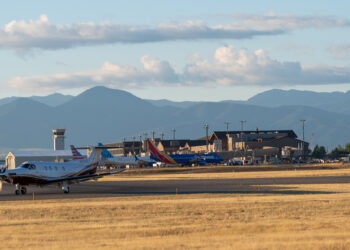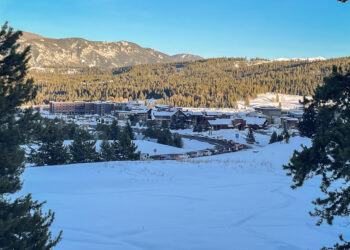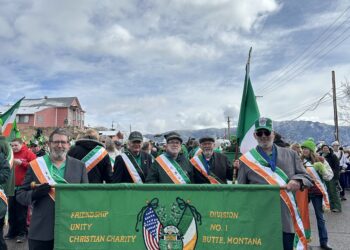By Jessianne Wright EBS Contributor
O Christmas tree, o Christmas tree
How lovely are thy branches
Your boughs so green in summertime
Stay bravely green in wintertime
O Tannenbaum, o Christmas tree
How lovely are thy branches
The tradition of the Christmas tree dates back thousands of years. According to the Encyclopedia Britannica, evergreen trees, wreaths and garlands symbolized eternal life for the ancient Egyptians, Chinese and Hebrews, while early tree worship survived pagan rituals in Europe. During the first century, Romans celebrated Saturnalia, the pagan Roman winter solstice festival, by decorating trees.
However, the modern tradition of the Christmas tree, decorations and all, originated in Germany as a “paradise tree” hung with apples to represent the Garden of Eden. By the 16th century, these trees were adorned with candles and other decorations as a Christmas tradition.
Today, an estimated 30 million Christmas trees are sold in the U.S. each holiday season, which have been grown and harvested as part of a longstanding holiday tradition. Often, these trees have been trimmed and shaped before being transported great distances and arriving in your home from a commercial lot.
As an alternative to purchasing your Christmas tree from a vendor this year, consider harvesting your own with a U.S. Forest Service-issued permit. Permits are issued in many national forests, the Custer Gallatin included.
Selecting a tree
Access to forested land abounds in Gallatin Canyon, and the first step is to choose a place to go and look. Many Forest Service roads in the canyon close to vehicles in the winter, but you can easily park at a trailhead or gate and continue on foot or by ski.
When selecting the tree you’d like to put in your home, imagine how it’ll appear inside. Look for gaps in the branches and check that it’s straight, but remember that you can get creative with decorations if the tree happens to have exceptionally unique character. Consider measuring the available space in your home before you set out, as it’s easy to underestimate a tree’s height.
Once you’ve made your selection, you may be interested in identifying the tree species. Some of the more common trees native to the Custer Gallatin National Forest include the lodgepole pine, Englemann spruce, sub alpine fir and Douglas fir. Both fir species have blunt, soft needles, while the spruce needles are stiff and often are described as “spiky.” Lodgepole pines have clustered needles that are about 1.5 inches long.
As an aside, Montana’s Kootenai National Forest was selected to provide the 2017 Capitol Christmas tree, where it’s on display at the West Lawn of the U.S. Capitol in Washington, D.C. The 79-foot-tall Englemann spruce arrived on Nov. 25, after a 3,000-mile journey.
Cutting a tree
In southwest Montana, USFS Christmas tree permits cost $5 and up to three can be purchased per household. Trees can be harvested throughout the Custer Gallatin National Forest, except at campgrounds, trailheads, wilderness areas, developed recreation sites, posted timber sale units and areas where trees have recently been planted for reforestation.
It’s important to remember that trees are a part of the ecosystem. They help protect watersheds, provide habitat for wildlife and contribute to beautiful scenery. When making your tree selection, keep in mind the following USFS guidelines:
– Don’t cut trees growing within 50 feet of any stream, lake or wetland.
– Only cut trees 15 feet tall or less.
– Cut your tree as close to the ground as possible, and below the lowest live limb. A remaining stump measuring 6 inches high or less is ideal.
– After cutting your tree, attach the permit to a lower limb near the trunk for transporting home.
– Topping trees, or cutting the top off, deforms future growth and leaves a visual eyesore. Take the entire tree or choose another one.
Caring for a tree
Once your Christmas tree has made it home, there are just a few things you’ll need to do to make sure those evergreen boughs stay pretty. Trees are a plant, and therefore they rely on water. Make sure you use a tree stand that fits your tree and can hold an adequate amount of water. And after the tree is brought into the house, remember to give it water daily.
If you get home late after the cutting or aren’t quite ready to put that tree inside, that’s OK. Most species can go six to eight hours after cutting and will still draw water through the trunk.
If you need to store the tree longer, consider putting it in a bucket of water. When you are ready to bring the tree inside, make a fresh cut on the trunk to remove the drying base. This will improve water uptake.
Harvesting your own tree may quickly become a special Christmas tradition. Whether you cross-country ski or snowshoe to the tree—or perhaps ride horseback, my personal favorite—you can easily make an adventure of the outing, bringing along sleds for the kids and making a day of finding just the right evergreen.
Christmas tree permits for the Custer Gallatin National Forest, as well as separate permits for garlands, are for sale at all seven ranger district offices, including Bozeman and West Yellowstone, as well as several community businesses. Permits are available in Big Sky at Ace Hardware and the Big Sky Conoco, and in Bozeman at Murdoch’s Ranch & Home Supply on Jackrabbit Lane and 7th Avenue, as well as Owenhouse Ace Hardware downtown and on West Main Street.













